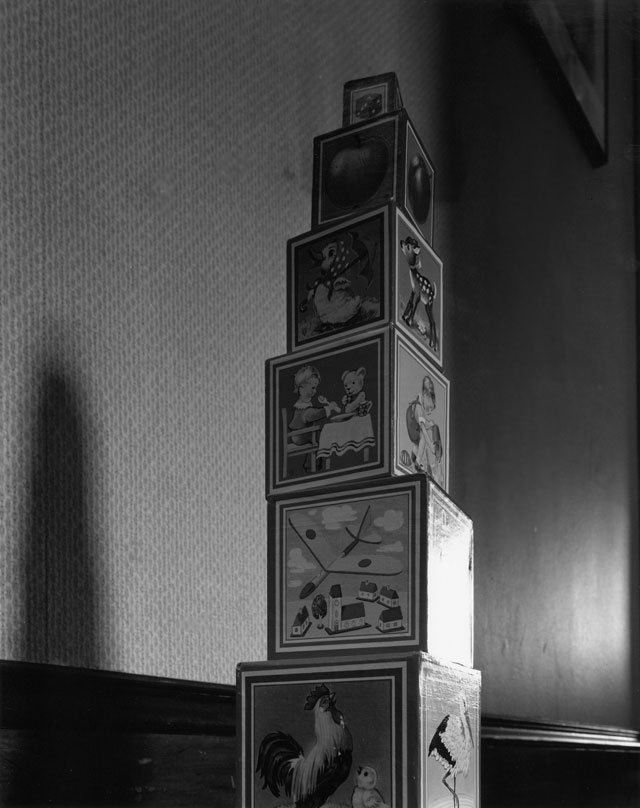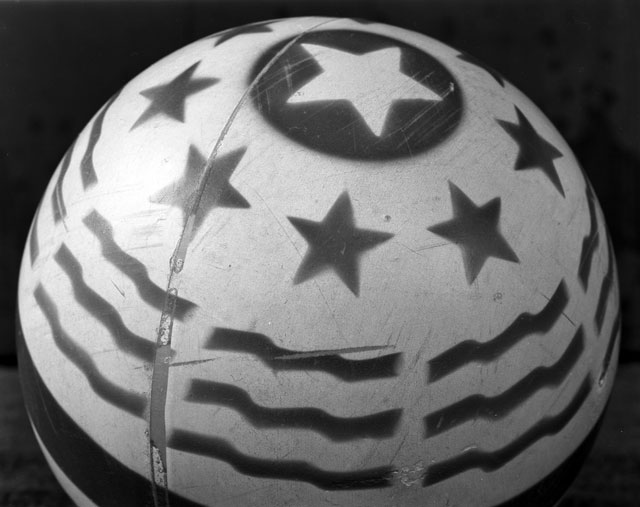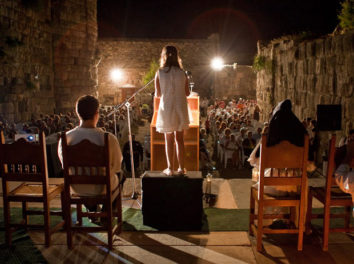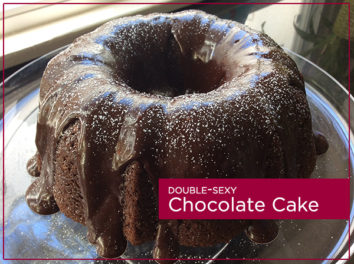
Laura and Brady in the Shadow of Our House, 1994, Abelardo Morell (American, born Cuba, 1948). Gelatin silver print. The Art Institute of Chicago, gift of Abelardo Morell, © Abelardo Morell, courtesy of Edwynn Houk Gallery, New York
The world can be a scary place for a kid. Monsters on a movie screen could also easily be lurking under a bed. A garbage truck could be a big green beast ready to gobble up the neighborhood. The imagination of a child is a powerful thing and can be as sinister as it is fantastic. Artist Abelardo Morell set out early in his career to capture a series of images that display the menace and wonder of everyday objects as they appear to a child. Select photographs by Morell are now on view at the J. Paul Getty Museum in Abelardo Morell: The Universe Next Door.
In a conversation with Getty curator Paul Martineau, Morell discusses his family’s journey from Cuba to New York City when he was a child, and how the camera helped him express himself in a way that language could not. However, it wasn’t until the birth of his son, Brady, that he began to consider how a child’s view of the world differs from that of an adult. Looking inward at his own family life, Morell found novel subject matter in domestic interiors. He set aside his hand-held camera in favor of a large-format view camera that necessitated a more deliberate style and elicited a wealth of tactile detail from his subjects.
“I felt, since now I’m a father, then I get to decide what’s important for me,” Morell explains. “It was a subtle liberation, but it allowed me to slow down and start thinking.”
Crawling on the floor with a camera at the eyelevel of a newborn baby, Morell began shooting toys and other objects in a way that reflected the confusing reality of the first years of consciousness. In Toy Blocks (1987), a set of wood cubes with cheery imagery is transformed into a looming Tower of Babel, while in Refrigerator (1987), a common appliance appears as a giant monolith with jumbled letters on it, evoking the preverbal vision of a child.

Toy Blocks, 1987, Abelardo Morell (American, born Cuba, 1948). Inkjet print. Courtesy of the artist and Edwynn Houk Gallery, New York, © Abelardo Morell, courtesy of Edwynn Houk Gallery, New York

Refrigerator, 1987, Abelardo Morell (American, born Cuba, 1948). Inkjet print. Private collection © Abelardo Morell
“I knew that for Brady, being so little, being on the floor, a stack of blocks like that was quite imposing,” Morell explains. “I wanted to suggest the fears and the awesomeness of confronting certain things at an early stage in life.”
Images like Ball (1987) offer a melancholic look at growing up, as a once brilliantly colored toy has faded and is photographed in nostalgic black and white. Dollhouse (1987), according to Morell, “pits the security of our home with the lurking of the outside—not quite dangerous but other.”

Ball, 1987, Abelardo Morell (American, born Cuba, 1948). Courtesy of the artist © Abelardo Morell

Dollhouse, 1987, Abelardo Morell (American, born Cuba, 1948). Gelatin silver print. The J. Paul Getty Museum, Los Angeles, © Abelardo Morell, courtesy of Edwynn Houk Gallery, New York
Morell’s photographs—whether they focus on a child’s perspective or use the camera obscura in a new and novel way—all point to the wonder of everyday life, where objects as simple as a pencil or footprint are elevated due to the play of light and shadow. His photographs toy with a static perspective of the world and highlight the seemingly insignificant experiences that have much more than a child-sized impact on our lives.

Footprints, 1987, Abelardo Morell (American, born Cuba, 1948). Inkjet print. High Museum of Art, Atlanta, purchased with fund from the Friends of Photography, 2012.213 © Abelardo Morell




Terrific post! Reminds me (a little bit) of William Eggleston’s use of perspective in this shot: http://bit.ly/19CMSSx
Love this post! Can’t wait to take my kids and get their POV on these amazing photos.
I love how this post really puts the vision of a toddler in perspective. I’d be curious to see pictures your kids took as they grew up and their perceptions changed. Photography is such a creative way to get kids started in story telling and enhance their ability to become a strong writer.